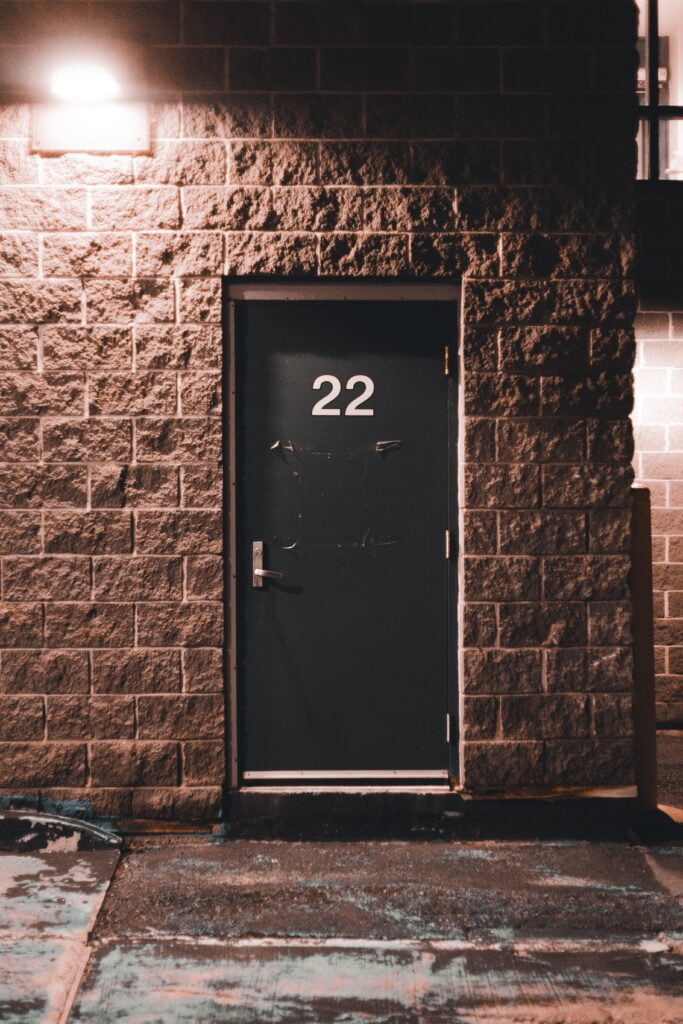What Gem Is Higher Than A Diamond?
What Gem Is Higher Than A Diamond? If the sparkle of a diamond has caught your eye and mesmerized you with its beauty, prepare to have your mind blown by another, even more fascinating stone. In the world of gems, there’s a hidden jewel just waiting for your admiration that in certain respects, even outranks the much-beloved diamond. It’s time to explore the unknown realm that elevates above the dazzling supremacy of diamonds! Hold your breath as we embark on revealing the gem that holds a higher status than a diamond, bound to pique your curiosity and captivate your imagination!

Understanding Diamond
Defining what a diamond is
A diamond is a rare, naturally occurring mineral composed of pure carbon. This precious stone is renowned for its stunning aesthetic appeal and exceptional physical qualities. Of all the gemstones known to man, diamonds are valued for their extreme hardness and brilliance – characteristics that make them uniquely suited for use in high-quality jewelry.
Unique properties of diamond
One of the key properties that set diamonds apart from other gemstones is their hardness. On the Mohs scale of mineral hardness, diamonds score a perfect 10, making them the hardest known mineral on Earth. This hardness contributes to their durability, longevity, and resilience against scratches. Additionally, diamonds have an unrivaled ability to refract light, giving them a unique luster and brilliance that’s highly sought after in both fashion and fine art. Sotheby’s, Christie’s, and Phillips Showcase Rare Colored Diamonds in Recent Jewelry Auctions
Rarity and value of diamond
The value of diamonds is primarily derived from their rarity. The process of forming a diamond under natural conditions is incredibly lengthy and occurs under very specific circumstances. This inherent scarcity, combined with the enduring global demand for diamonds, ensures that they retain high market value. Not all diamonds are created equal, though, and their price can vary significantly depending on factors like size, color, clarity, and cut.
Basic Process And Stages of Diamond Formation
How diamond is formed
Diamonds are formed deep within the Earth’s mantle, at depths of about 100 miles below the surface. Here, conditions of extremely high temperature and pressure cause carbon atoms to crystallize and form diamonds. The diamonds are then transported closer to the surface by deep-source volcanic eruptions, where they can be mined.
The necessary conditions for diamond formation
For diamonds to form, two key conditions must be met: extreme pressure and high temperature. These conditions are mostly found deep within the Earth’s mantle. The heat and pressure cause carbon atoms to bond in a unique crystalline structure, resulting in a diamond.
Duration of the formation process
The process of diamond formation is by no means quick. It takes between 1 billion to 3.3 billion years – approximately 25% to 75% of the Earth’s age – for a diamond to form under natural conditions. This lengthy process contributes significantly to the rarity and value of diamonds.
World’s Most Expensive Diamonds
Most famous and valuable diamonds
Some of the most famous and valuable diamonds in the world include the Hope Diamond, the Cullinan Diamond, and the Koh-i-Noor Diamond. Each one of these diamonds possesses unique qualities and has a rich history that contributes to their fame and value.
Historical significance of these diamonds
The diamonds mentioned above have played significant roles in world history. For instance, the Hope Diamond is famously tied to a curse, while the Koh-i-Noor Diamond is associated with royal power and is currently a part of the British Crown Jewels. These historical associations add cultural value and significance to these diamonds.
Current price of these diamonds
Estimating the current price of these famous diamonds is tricky since they rarely, if ever, come up for sale. Their worth is mostly historical and prestigious, driving their value to incalculable levels. However, it’s worth noting that the Hope Diamond, for instance, is insured for $250 million.
Factors Influencing Diamond Value
Conditions that affect diamond’s value
Several factors can affect the value of a diamond. These include the quality of its cut, its color, its clarity, and its size (or carat weight). Other factors such as the diamond’s shape and whether it was treated or enhanced can also influence its value.
Cut, color, clarity and carat weight (4 Cs)
The ‘Four Cs’ of diamond quality are critical in determining a diamond’s value. Cut refers to how well a diamond has been cut from its raw form. Color grades the absence of color in a diamond. Clarity assesses how free a diamond is from inclusions and blemishes. Carat weight, finally, determines a diamond’s size.
Differences between natural and synthetic diamonds
Natural diamonds are those formed over billions of years under natural conditions deep under the Earth’s surface. Synthetic diamonds, on the other hand, are man-made and are created in a lab. Despite being physically and chemically identical to natural diamonds, synthetic diamonds are significantly less expensive.

Gems That Are More Valuable Than Diamonds
Identifying gems more valuable than diamonds
Although diamonds are synonymous with value and luxury, there are other gems out there that are more valuable. Some of these include Blue Garnet, Jadeite, and Pink Star Diamonds.
Key factors that make these gems more valuable
These gems are more valuable than diamonds because of their extreme rarity and unique properties. For instance, blue garnets are prized for their color-changing ability, while Pink Star Diamonds derive their value from their large size and vibrant color. https://www.aigsthailand.com/
Examples of such gems
The Pink Star Diamond, Blue Garnet, and Jadeite are some examples of gems that are more valuable than diamonds. These gemstones not only surpass the value of a diamond but also boast unique properties and appearances that set them apart.
Comparing Diamond With Pink Star Diamond
What is a Pink Star Diamond
The Pink Star Diamond is a Fancy Vivid Pink diamond, the highest grading for a diamond’s color. It weighs an impressive 59.60 carats and is renowned for its pure, vibrant pink color.
Why are Pink Star Diamonds highly valued
Pink Star Diamonds are highly valued for their extraordinary size and intense color. Furthermore, the rarity of pink diamonds, coupled with the exceptional quality of the Pink Star Diamond, adds to its exceptional value.
Record sales of Pink Star Diamonds
The Pink Star Diamond holds the record for the most expensive gemstone ever sold at auction. In April 2017, it was sold at Sotheby’s in Hong Kong for a staggering $71.2 million.

Comparing Diamond With Blue Garnet
What is a Blue Garnet
Blue Garnet is a rare gem that is most famous for its ability to change color based on the lighting. Under daylight, the Blue Garnet appears greenish-blue while under incandescent light, it turns purplish-red.
Unique properties of Blue Garnet
Aside from its rarity, the blue garnet’s color-changing ability is its most unique and prized property. This distinctive property makes it a highly desired gem for collectors and jewelers alike.
Current value of Blue Garnet
Blue Garnets are one of the most valuable gemstones in the world, often selling for more than $1,500 per carat depending on their quality. However, due to their rarity, they are rarely available on the market.
Comparing Diamond With Jadeite
Introduction to Jadeite
Jadeite is one of two minerals that are recognized as the gemstone jade, the other being nephrite. It’s known for its intense green color and is considered to be the purer and rarer of the two jade types.
Rarity and significance of Jadeite
Jadeite is more valuable than nephrite due to its intense color and greater transparency. At the same time, high-quality Jadeite, especially the type known as “Imperial Jade”, is extremely rare, making it even more valuable.
Highest prices ever fetched by Jadeite
In 2014, a necklace made of 27 Jadeite beads, known as the Hutton-Mdivani Necklace, was sold at Sotheby’s for a record-breaking $27.44 million. This landmark sale confirmed the high demand and value of top-quality Jadeite in the global market.
Comparing Diamond With Blue Moon Diamond
Describing what is a Blue Moon Diamond
The Blue Moon Diamond is an exceptionally rare gem known for its stunning blue color. Weighing in at 12.03 carats, this diamond is internationally recognized for its outstanding color, clarity, and size.
Value of the Blue Moon Diamond
Its rare blue color, large size, and virtually flawless clarity make the Blue Moon Diamond extremely valuable. Furthermore, blue diamonds are among the rarest of all colored diamonds, adding to the gem’s extraordinary value.
Why the Blue Moon diamond is highly prized
The Blue Moon diamond is highly prized for its superb quality and rarity. In 2015, the diamond was sold at Sotheby’s for an astounding $48.4 million, making it the world’s most expensive diamond per carat ever sold at auction.
Rarity versus Durability
Understanding the connection between durability and value
In the world of gemstones, both durability and rarity contribute to a gem’s value. What is fascinating about diamond is that it excels in both categories. It is remarkably durable, scoring a 10 on the Mohs hardness scale, and it is also quite rare.
How diamond’s durability stacks against other gems
Diamond’s exceptional hardness makes it resistant to scratching and gives it a high polish. This is one of the reasons why it’s widely used in jewelry. When compared with other gems, a diamond’s durability is unsurpassed.
Other gems that have superior durability compared to diamond
While diamond is indeed the hardest known mineral, some other gems have superior toughness – the ability to resist breakage from impact. Jadeite and nephrite (both types of jade), for instance, are known for their exceptional toughness. Despite this, their overall value is still less than that of a diamond due to their relative abundance and lesser brilliance.
